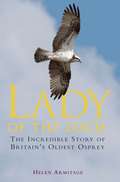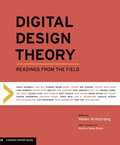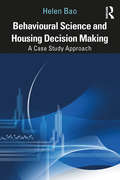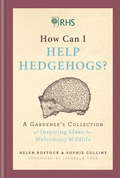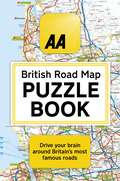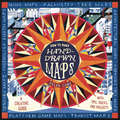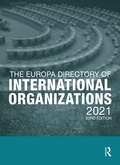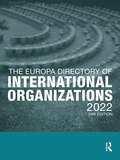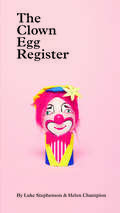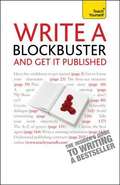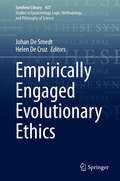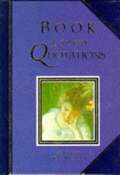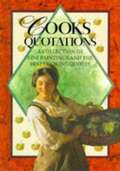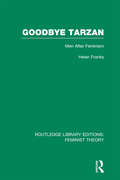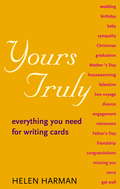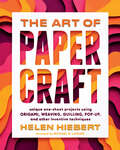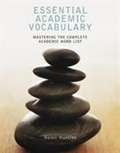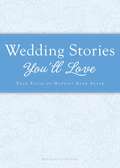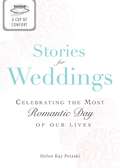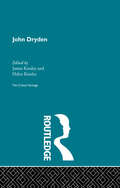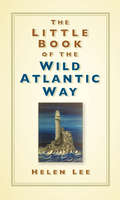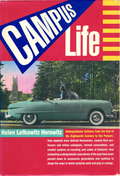- Table View
- List View
Lady of the Loch: The Incredible Story of Britain's Oldest Osprey
by Helen ArmitageDuring the last decade, the osprey has risen, phoenix-like, from the ashes - once extinct in Britain, now returned as a powerful symbol of hope. The opreys' story is a moving tale of triumph over adversity. Their slow but sure resurgence has attracted huge public interest and support; that of one bird in particular, Lady, at 25, Britain's oldest breeding osprey, has tugged at the world's heartstrings.For the past twenty years, Lady has made the 3000-mile journey from Africa back to Scotland, her nest and her mate. In March 2010, she produced an egg for a record-breaking 20th year; despite her weakened state throughout that summer, and with the stalwart assistance of her youthful mate, the chicks fledged successfully. But how many more times can Lady defy the odds; will the spring see her return, as, happily, it will so many other ospreys?
Digital Design Theory: Readings from the Field
by Helen ArmstrongDigital Design Theory bridges the gap between the discourse of print design and interactive experience by examining the impact of computation on the field of design. As graphic design moves from the creation of closed, static objects to the development of open, interactive frameworks, designers seek to understand their own rapidly shifting profession. Helen Armstrong's carefully curated introduction to groundbreaking primary texts, from the 1960s to the present, provides the background necessary for an understanding of digital design vocabulary and thought.Accessible essays from designers and programmers are by influential figures such as Ladislav Sutnar, Bruno Munari, Wim Crouwel, Sol LeWitt, Muriel Cooper, Zuzana Licko, Rudy VanderLans, John Maeda, Paola Antonelli, Luna Maurer, and Keetra Dean Dixon. Their topics range from graphic design's fascination with programmatic design, to early strivings for an authentic digital aesthetic, to the move from object-based design and to experience-based design. Accompanying commentary assesses the relevance of each excerpt to the working and intellectual life of designers.
The New Americans: A Guide to Immigration since 1965 (Harvard University Press Reference Library #2)
by Helen B. Marrow Mary C. Waters Reed UedaListen to a short interview with Mary Waters Host: Chris Gondek | Producer: Heron & Crane Salsa has replaced ketchup as the most popular condiment. A mosque has been erected around the corner. The local hospital is staffed by Indian doctors and Philippine nurses, and the local grocery store is owned by a Korean family. A single elementary school may include students who speak dozens of different languages at home. This is a snapshot of America at the turn of the twenty-first century. The United States has always been a nation of immigrants, shaped by successive waves of new arrivals. The most recent transformation began when immigration laws and policies changed significantly in 1965, admitting migrants from around the globe in new numbers and with widely varying backgrounds and aspirations. This comprehensive guide, edited and written by an interdisciplinary group of prominent scholars, provides an authoritative account of the most recent surge of immigrants. Twenty thematic essays address such topics as immigration law and policy, refugees, unauthorized migrants, racial and ethnic identity, assimilation, nationalization, economy, politics, religion, education, and family relations. These are followed by comprehensive articles on immigration from the thirty most significant nations or regions of origin. Based on the latest U.S. Census data and the most recent scholarly research, The New Americans is an essential reference for students, scholars, and anyone curious about the changing face of America.
Behavioural Science and Housing Decision Making: A Case Study Approach
by Helen BaoThis book takes a behavioural approach to examine six important housing questions: tenure decision, gentrification, place attachment, housing bubbles, housing wealth, and residential satisfaction. Using experimental and field data, the book demonstrates the effects of six behavioural biases and heuristics (i.e., anchoring and reference dependence, loss aversion, mental accounting, endowment effect, herd behaviours, and social comparison) on these housing decisions. The first part of the book introduces the questions and provides a behavioural science toolbox before the second part adopts a real-world case study approach. Real data sets and suggested answers are provided, and the cases come from the UK, USA, and China. Background information is given in each case to facilitate the understanding of the case data and question, as well as the discussions on the results. This book is ideal supplementary reading on a variety of courses such as housing studies, economics, real estate, research methods, and for students and academics who are interested in the application of behavioural science in housing decisions.
Freehand: Sketching Tips and Tricks Drawn from Art
by Helen Birch&“Examples + explanations = inspiration . . . There is something in this guide for advanced, intermediate, and beginning artists alike.&” —Library Journal Creating stylish sketches by hand is easy and fun with this inspiring guide. Freehand breaks down basic drawing techniques into bite-sized chunks, and reveals their practical application in dazzling examples by today&’s coolest artists. Over 200 innovative works of art demonstrate all the fundamentals—line, tone, composition, texture, and more—and are presented alongside friendly text explaining the simple techniques used to achieve each stylish effect. The final section of the book offers aspiring artists essential reference materials to hone their drafting skills and practice what they&’ve learned. Petite in size but comprehensive in scope, this hip handbook will teach artists of all skill levels how to find their personal drawing style and start making amazing sketches.
RHS How Can I Help Hedgehogs?: A Gardener's Collection of Inspiring Ideas for Welcoming Wildlife
by Sophie Collins Helen Bostock'Britain's ten million acres of private gardens add up to a vital haven for wildlife. Chock-a-block with ideas for encouraging wildlife into your plot, this pocket-sized book tells you how to make your off-street parking wildlife-friendly, why you should welcome wasps into the garden and whether you should let ladybirds overwinter in your home. One for budding David Attenboroughs.' - Mail on SundayForeword written by Isabella Tree of the Knepp Wildland Project.RHS How Can I Help Hedgehogs? offers more than 100 ideas for you to help wildlife thrive in your garden. Packed with simple, low-cost ideas that will make a huge difference to the natural world, the book suggests ways to help birds, bees, butterflies, beetles and many other declining species.Hopeful, informative and entertaining, with plenty of 'I-never-knew-that' mini-features, this is a book you and your family need, and one that you'll all enjoy, too. Includes topics such as how to increase the biodiversity of your plot and how to improve your soil without using chemicals.Includes...- Can I make my garden bat-friendly?- Do green roofs work?- Why should I love my weeds?- Should I keep honey bees?- Which flowers are friendliest for moths?- Where's best for a bird box?- Is garden lighting disruptive?...and many more.
The AA British Road Map Puzzle Book: These highly-addictive brain games will make you a mapping mastermind
by Helen BrocklehurstNo need to miss the open road whilst you're in lockdown - dive into these highly addictive map-based brain games whist you stay home, now available in ebook.Uncover the history of Britain's roads and work your way around its highways, byways, bypasses and backwaters in these map-based challenges.Test your word-puzzling skills, map-reading savvy, general knowledge and problem-solving prowess, with over 400 mind-stretching questions. Guaranteed to drive your mind round the bend, this is the ultimate quiz to British places for motorists and map addicts.From producing the first road signs and handwriting route directions, to its bestselling atlases and touring guides, The AA has been helping motorists navigate British roads since 1905 - and no one knows Britain's roads better.And whilst you #StayHome, don't miss these other great titles from Sphere Books: ** Distract Yourself: 101 Positive Things to Do and Learn Whilst You Stay Home **** The Bumper Book of Would You Rather? Over 350 hilarious hypothetical questions for ages 6 to 106 **** Home Sweet Home: The Little Book of Natural Cleaning **** Shelf Respect: A Book Lovers' Guide to Curating Your Book Shelves at Home **
How to Make Hand-Drawn Maps: A Creative Guide with Tips, Tricks, and Projects
by Helen CannWith wonderful examples and easy-to-follow instructions, this beautifully illustrated how-to book makes it simple and fun to create one-of-a-kind hand-drawn maps. Helpful templates, grids, and guidelines complement a detailed breakdown of essential cartographic elements and profiles of talented international map artists. From city maps and family trees to treasure maps, palmistry charts, platformgame maps, and more, the wide range of projects collected here will satisfy first-time cartographers as well as veteran mapmakers inspired by the popular map art trend.
The Europa Directory of International Organizations 2021
by Helen CantonThe Europa Directory of International Organizations 2021 serves as an unequalled one-volume guide to the contemporary international system. Within a clear, unique framework the recent activities of all major international organizations are described in detail. Given alongside extensive background information the reader is able to assess the role and evolving functions of these organizations in today's world. The contact details, key personnel and activities of more than 2,000 international and regional entities have again been thoroughly researched and updated for this 23rd edition. Highlights in this edition include: - a fully revised Who's Who section with biographical details of the key players in the international system. - the response of the international community to crises and conflicts throughout the world. - specially-commissioned introductory essays cover topics including global environmental governance, transboundary water management, and multilateral governance and global action on health.
The Europa Directory of International Organizations 2022
by Helen CantonThe Europa Directory of International Organizations 2022 serves as an unequalled one-volume guide to the contemporary international system. Within a clear, unique framework the recent activities of all major international organizations are described in detail. Given alongside extensive background information the reader is able to assess the role and evolving functions of these organizations in today's world. The contact details, key personnel and activities of more than 2,000 international and regional entities have again been thoroughly researched and updated for this 24th edition. Highlights in this edition include: - a fully revised Who's Who section with biographical details of the key players in the international system. - the response of the international community to crises and conflicts throughout the world. - specially-commissioned introductory essays cover topics including global environmental governance, transboundary water management, and multilateral governance and global action on health.
The Clown Egg Register
by Luke Stephenson Helen ChampionStep right up for the Greatest Book on Earth! For more than 70 years, Clowns International—the oldest established clowning organization—has been painting the faces of its members on eggs. Each one is a record of a clown's unique identity, preserving the unwritten rule that no clown should copy another's look. This mesmerizing volume collects more than 150 of these portraits, from 1946 to the modern day, accompanied by short personal histories of many of the clowns. Here are Tricky Nicky, Taffy, Bobo, Sammy Sunshine, the legendary Emmett Kelly, and Jolly Jack, clowning since 1977 and still performing today with a penguin puppet named Biscuit. A treasure just like the eggs it enshrines, The Clown Egg Register is an extraordinary archive of images and lives of the men and women behind the make-up.
Write A Blockbuster - And Get It Published: Teach Yourself
by Helen CornerDesigned for all those wanting to be the next Dan Brown, this introduction to writing popular fiction will be a key addition to the writer's bookshelf. Authored jointly by a literary consultant/agent and a highly successful author, it offers not simply a guide to writing a novel but an introduction to writing a plot-based, action-focused blockbuster. It covers such key practicalities as the importance of plot, pace, action, character and the different demands of such popular commercial genres as romantic fiction, thrillers and so on. For those looking to write for a living, this book provides vital information on the process, including finding an agent and making a living as a writer. NOT GOT MUCH TIME? One, five and ten-minute introductions to key principles to get you started. AUTHOR INSIGHTS Lots of instant help with common problems and quick tips for success, based on the authors' many years of experience. TEST YOURSELF Tests in the book and online to keep track of your progress. EXTEND YOUR KNOWLEDGE Extra online articles at www.teachyourself.com to give you a richer understanding of how to write a blockbuster. FIVE THINGS TO REMEMBER Quick refreshers to help you remember the key facts. TRY THIS Innovative exercises illustrate what you've learnt and how to use it.
Empirically Engaged Evolutionary Ethics (Synthese Library #437)
by Johan De Smedt Helen De CruzA growing body of evidence from the sciences suggests that our moral beliefs have an evolutionary basis. To explain how human morality evolved, some philosophers have called for the study of morality to be naturalized, i.e., to explain it in terms of natural causes by looking at its historical and biological origins. The present literature has focused on the link between evolution and moral realism: if our moral beliefs enhance fitness, does this mean they track moral truths? In spite of the growing empirical evidence, these discussions tend to remain high-level: the mere fact that morality has evolved is often deemed enough to decide questions in normative and meta-ethics. This volume starts from the assumption that the details about the evolution of morality do make a difference, and asks how. It presents original essays by authors from various disciplines, including philosophy, anthropology, developmental psychology, and primatology, who write in conversation with neuroscience, sociology, and cognitive psychology.
Book Lovers Quotations (Quotation Giftbooks)
by Helen ExleyThis little collection of quotations will bring joy to those who love books. Here, in one small volume, is the quintessential wit of Groucho Marx, the hardhitting bluntness of Hemingway, the sarcasm of Bertrand Russell. Here are what the authors themselves feel about books: from Oscar Wilde and Mao Tse Tung, Solzhenitsyn and Dylan Thomas, to Thomas a Kempis and Anne Frank. Plus the thoughts of ordinary people about the role of books in their lives: 'Any new book read to fill an idle hour could send you to the ends of the earth, change your career, affirm or obliterate your faith. Be warned.' In Lavish art reproductions Readers and reading are shown as perceived by several artists. Works complement the meaning of the quotes. Image descriptions convey the people, objects and places depicted, the mood conveyed and the possible intent of the artists.
Cook's Quotations: A Collection of Fine Paintings and the Best Cooks' Quotes (Quotation Giftbooks)
by Helen ExleyA collection of beautiful fine art paintings and the best cooking quotations. It is an ideal gift for anyone who enjoys cooking. "Cooking is like love. It should be entered into with abandon or not at all." HARRIET VAN HORNE Paintings are described.
Goodbye Tarzan: Men After Feminism (Routledge Library Editions: Feminist Theory)
by Helen FranksWhat do men feel about the women’s movement? How has it changed them, if at all? To try and answer these questions Helen Franks talked to many men and drew upon research in Britain, the US and Australia. She interviewed men from all social groups – business executives, writers, factory workers, shopkeepers – and all ages, from fifteen to fifty-nine. They included divorced men, husbands, gay men, and some who had ‘swapped roles’ with the women in their lives. She found some surprising results. All men, whatever their attitude to women, seem to be affected, not to say threatened, by feminism. In these pages she documents the thoughts – often confused – of very different kinds of men on sharing housework; women as colleagues; sexual behaviour; pornography; gayness; friendship with other men; fatherhood and marriage. Helen Franks is a sympathetic listener. A committed feminist, she pulls no punches in her criticisms of traditional male attitudes. But she believes that the problems men find in responding constructively to feminism are considerable. After all, men have no broad-based ‘men’s movement’ to sustain them. And she argues that patriarchal society oppresses men, just as, though in a different way, it does women. The feminist classics of the 1960s and 1970s changed women’s lives by revealing a world of shared experiences and unfulfilled potential. The time has come to do the same for men.
Yours Truly: Everything You Need for Writing Cards
by Helen HarmanYou?ll never be lost for words with this book!Are you sometimes stumped by a blank page? Never know what to write on a card? You?re not alone ? and Yours Truly: Everything you need for writing cards is the answer! This book is a helpful and easy-to-use guide that provides numerous examples of `just the right thing? to write for a range of events, including:. birthdays. weddings and engagements. Christmas and other cultural festivals. new baby. Valentine?s Day. anniversaries. thank you. bon voyage. congratulations. bereavement. divorce. missing youYours Truly is the perfect solution for finding the right message for every occasion.
The Art of Papercraft: Unique One-Sheet Projects Using Origami, Weaving, Quilling, Pop-Up, and Other Inventive Techniques
by Helen HiebertPaper artist and teacher Helen Hiebert compiles a one-of-kind collection of 40 unique projects, each using just one sheet of paper. Combining decorative paper techniques like marbling, stamping, and stenciling with dimensional techniques like origami, cutting, folding, quilling, stretching, weaving, and pop-ups, The Art of Papercraft offers a rich variety of projects that will delight crafters, artists, and designers alike, including paper votive lights, pop-up cards, folded paper gift boxes and envelopes, woven paper wall hangings, miniature one-sheet books, and much more. Every project is beautifully photographed and accompanied by step-by-step visual instructions. Guidance on selecting tools, materials, and paper selection; in-depth technique instructions; and profiles of contributing paper artists make this a rich and practical celebration of papercraft. This publication conforms to the EPUB Accessibility specification at WCAG 2.0 Level AA.
The Papermaker's Companion: The Ultimate Guide to Making and Using Handmade Paper
by Helen HiebertCraft your own colorful paper goods and personalized stationary. With clear, step-by-step instructions, Helen Heibert covers all aspects of the papermaking process — from growing and harvesting plants for a malleable paper pulp to embellishment techniques like dyeing, embossing, and laminating. With tips on building your own papermaking equipment, ideas for transforming junk mail into dazzlingly unique notecards, and much more, you’ll be inspired to let your creativity shine as you explore the endless possibilities of handcrafted papers.
Essential Academic Vocabulary: Mastering The Complete Academic Word List
by Helen HuntleyEssential Academic Vocabulary prepares students for academic success by helping them preview, learn, and practice vocabulary from the Academic Word List in context. Engaging academic readings highlight chapter vocabulary in context. From chapter to chapter, the readings and vocabulary increase in complexity level, allowing students to establish and build upon a solid vocabulary foundation.
Wedding Stories You'll Love: True tales of happily ever after (Cup of Comfort Stories)
by Helen KayWedding Stories You'll Love pays tribute to that most important of days when you and your soul mate make your everlasting love for each other "official." You’ll share in both the excitement of new love and the steadfastness of long-time love with these three wedding stories. Whether you’re a newlywed or you’re celebrating a golden anniversary, Wedding Stories You'll Love will delight you with these tender tales of commitment, adoration, and intimate bonds.
A Cup of Comfort Stories for Weddings: Celebrating the most romantic day of our lives
by Helen Kay PolaskiA Cup of Comfort Stories for Weddings pays tribute to that most important of days when you and your soul mate make your everlasting love for each other “official.” You’ll share in both the excitement of new love and the steadfastness of long-time love with these three wedding stories. Whether you’re a newlywed or you’re celebrating a golden anniversary, A Cup of Comfort Stories for Weddings will delight you with these tender tales of commitment, adoration, and intimate bonds.
John Dryden: The Critical Heritage (Oxford Standard Authors Ser.)
by James Kinsley Helen KinsleyThe Critical Heritage gathers together a large body of critical sources on major figures in literature. Each volume presents contemporary responses to a writer's work, enabling students and researchers to read for themselves, for example, comments on early performances of Shakespeare's plays, or reactions to the first publication of Jane Austen's novels.The carefully selected sources range from landmark essays in the history of criticism to journalism and contemporary opinion, and little published documentary material such as letters and diaries. Significant pieces of criticism from later periods are also included, in order to demonstrate the fluctuations in an author's reputation.Each volume contains an introduction to the writer's published works, a selected bibliography, and an index of works, authors and subjects.The Collected Critical Heritage set will be available as a set of 68 volumes and the series will also be available in mini sets selected by period (in slipcase boxes) and as individual volumes.
The Little Book of the Wild Atlantic Way
by Helen LeeDid you know?Ireland’s only sea battle, the Battle of Tory Island, was fought off the Donegacoast in 1798.The first casualties of the 1916 Easter Risingwere three members of the Irish Volunteers who drowned at Caherciveen.The oldest known system of cultivated fields is the Céide Field on the Mayo coast.The inventor of the submarine, Tom Holland, was born in Liscannor, Co. Clare, in 1841.Known for its spectacular scenery, the Wild Atlantic Way winds its way over 2,600km, through nine counties, from Kinsale in Co. Cork to Muff in Co. Donegal. On its sandy beaches and towering cliffs you will find the history behind ancient burial sites and ruined abbeys, tales of shipwrecks and battles, and stories of saints and patriots.The Little Book of the Wild Atlantic Way is a miscellany of the history and legends of this famous coastline; a useful reference book and quirky guide whether you are travelling the entire route, or just touching on one part of Ireland’s Atlantic coast.
Campus Life
by Helen Lefkowitz HorowitzEvery generation of college students, no matter how different from its predecessor, has been an enigma to faculty and administration, to parents, and to society in general. Watching today's students "holding themselves in because they had to get A's not only on tests but on deans' reports and recommendations," Helen Lefkowitz Horowitz, author of the highly praised Alma Mater, began to ask, "What has gone wrong--how did we get where we are today?" Campus Life is the result of her search--through college studies, alumni autobiographies, and among students themselves--for an answer.She begins in the post-revolutionary years when the peculiarly American form of college was born, forced in the student-faculty warfare: in 1800, pleasure-seeking Princeton students, angered by disciplinary action, "show pistols . . . and rolled barrels filled with stones along the hallways." She looks deeply into the campus through the next two centuries, to show us student society as revealed and reflected in the students' own codes of behavior, in the clubs (social and intellectual), in athletics, in student publications, and in student government.And we begin to notice for the first time, from earliest days till now, younger men, and later young women as well, have entered not a monolithic "student body" but a complex world containing three distinct sub-cultures. We see how from the beginning some undergraduates have resisted the ritualized frivolity and rowdiness of the group she calls "College Men." For the second group, the "Outsiders," college was not so much a matter of secret societies, passionate team spirit and college patriotism as a serious preparation for a profession; and over the decades their ranks were joined by ambitious youths from all over rural America, by the first college women, by immigrants, Jews, "townies," blacks, veterans, and older women beginning or continuing their education. We watch a third subculture of "Rebels"--both men and women - emerging in the early twentieth century, transforming individual dissent into collective rebellion, contending for control of collegiate politics and press, and eventually--in the 1960s--reordering the whole college/university world.Yet, Horowitz demonstrates, in spite of the tumultuous 1960s, in spite of the vast changes since the nineteenth century, the ways in which undergraduates work and play have continued to be shaped by whichever of the three competing subcultures--college men and women, outsiders, and rebels--is in control. We see today's campus as dominated by the new breed of outsiders (they began to surface in the 1970s) driven to pursue their future careers with a "grim professionalism." And as faint and sporadic signs emerge of (perhaps) a new activism, and a new attraction to learning for its own sake, we find that Helen Lefkowitz Horowitz has given us, in this study, a basis for anticipated the possible nature of the next campus generation.
